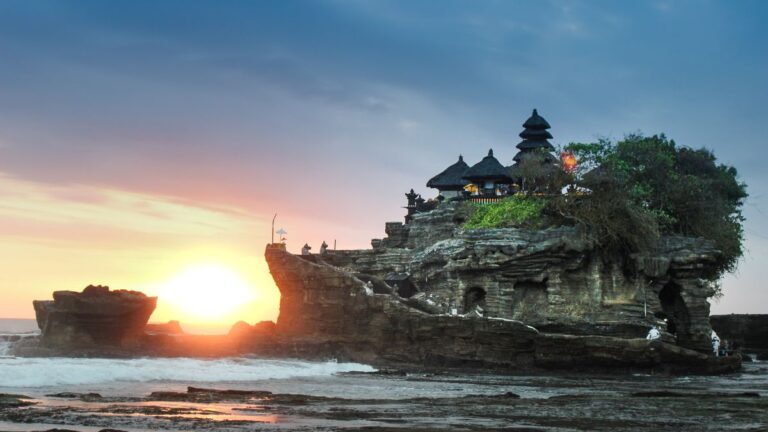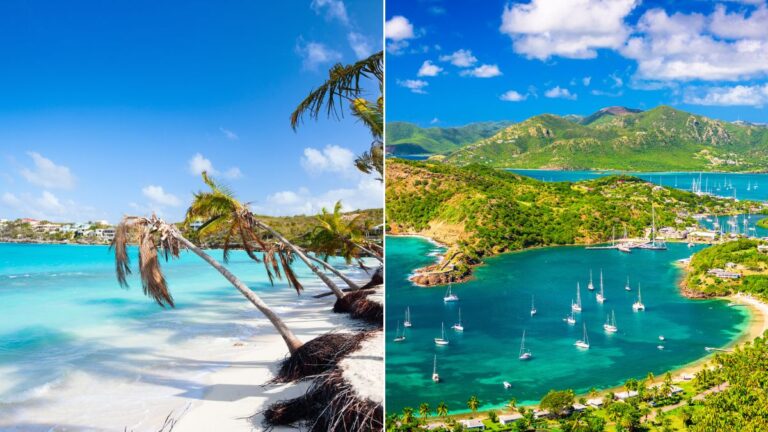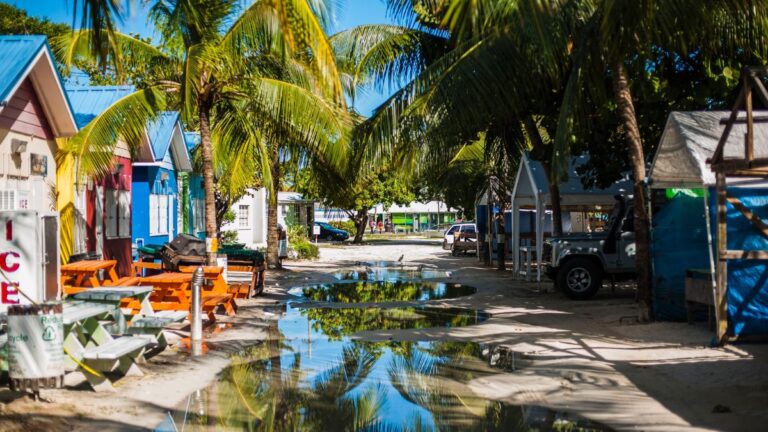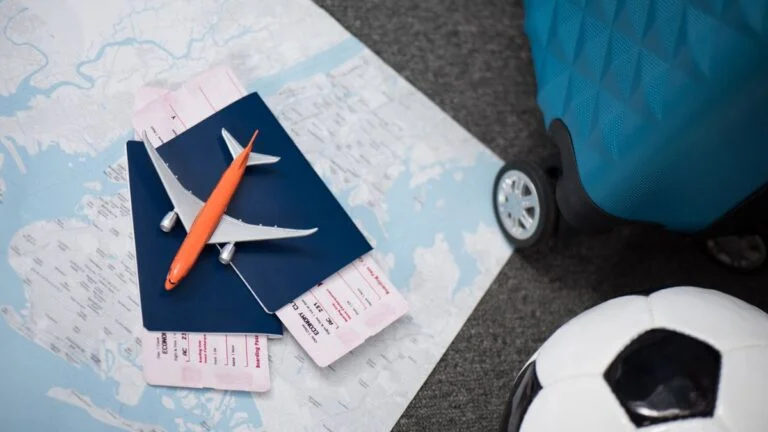45 Things to Bring on a Deserted Island: A Comprehensive Survival Guide for the Adventurous Traveler
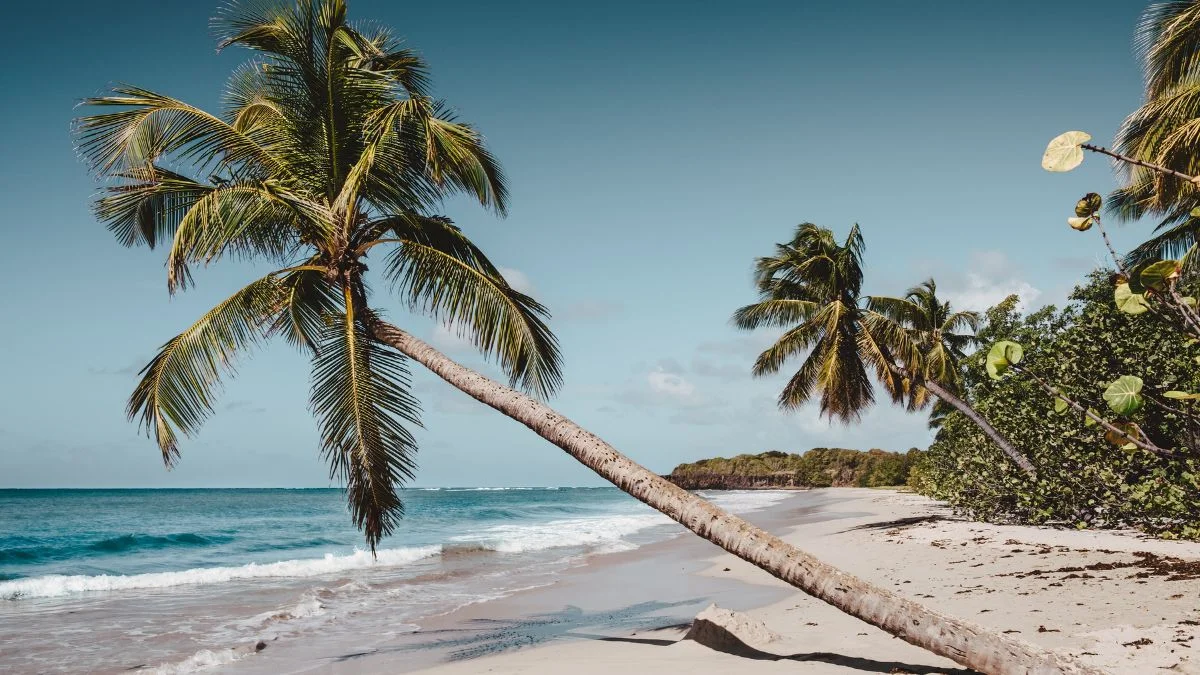
As participants in Amazon Associates and other programs, we earn from qualifying purchases. This comes at no additional cost to you. For more details, see our Affiliate Disclosure.
Finding yourself on a deserted island might seem like a plot from a movie, but it’s a situation that demands serious thought and preparation for adventurers and outdoor enthusiasts. Whether you’re planning a remote island getaway or just want to be ready for any unexpected survival scenario, knowing what to bring can make all the difference.
In this comprehensive guide, we’ll explore everything from the must-have necessities for safety to the more whimsical and luxurious items that could turn a challenging experience into a memorable adventure. From funny things to bring to essential tools for survival, we’ve got you covered. Let’s dive in!
Necessary Things to Bring: The Must-Have Items for Safety and Survival
When it comes to surviving on a deserted island, some items are non-negotiable. These must-have essentials can mean the difference between a challenging adventure and a life-threatening situation.
- Clean Water and Purification Tools: Without access to fresh water, survival becomes a daunting task. Packing purification tablets or a portable water filter can turn questionable sources into drinkable water.
- Shelter and Warmth: A compact, easy-to-set-up tent can provide immediate shelter. Add a lightweight sleeping bag or thermal blanket, and you can endure chilly nights.
- Food and Cooking Supplies: High-energy, non-perishable food items like protein bars, nuts, and dried fruits can sustain you. A small portable stove or fire-starting kit will allow you to cook and prepare food.
- First Aid Kit: A well-stocked first aid kit is essential for treating minor injuries and ailments. Make sure it includes items like bandages, antiseptics, pain relievers, and any personal medications.
- Navigation Tools: A compass and a map of the area (if available) or a GPS device will keep you on track. Knowing your location can be crucial for finding resources or signaling for help.
- Multipurpose Tools: A reliable multitool or Swiss Army knife can aid in numerous tasks from building shelter to preparing food.
- Communication Devices: A whistle, flare, or mirror can be used for signaling, and a fully charged satellite phone could be a lifeline to the outside world.
By prioritizing these necessities, you can create a solid foundation for survival and turn a potentially perilous situation into a manageable adventure. While these items cover basic needs, the rest of our guide will explore other categories that might add comfort, innovation, and even some fun to your deserted island experience.
Funny Things to Bring on a Deserted Island: A Lighthearted Look at Survival Essentials
Surviving on a deserted island doesn’t mean you have to leave your sense of humor behind! While the essentials are, of course, vital, there’s room in your pack for a few items that can bring a smile to your face and make the adventure a bit more enjoyable. Let’s take a whimsical look at some not-so-essential but amusing things to bring:
- A Beach Ball Named “Wilson“: Paying homage to the movie “Cast Away,” having a friendly “face” around might not be so crazy when solitude sets in!
- An Inflatable Palm Tree Cooler: Just because you’re stranded doesn’t mean you can’t enjoy a cold beverage (non-alcoholic, of course) in style.
- A Solar-Powered Fan Hat: Stay cool and fashionable with a hat equipped with a fan. It might not be the height of fashion, but it’s sure to be a conversation starter with your imaginary island friends.
- A Manual on How to Talk to Crabs: Hey, you might be spending a lot of time with them, so why not learn their language?
- A Pirate Flag: Stake your claim on the island with a cheeky Jolly Roger. You’re the captain now!
- A Copy of ‘Desert Island Survival for Dummies’: Because you never know when you might need a laugh or some unconventional survival tips.
While these items may seem silly, laughter and a positive attitude can be powerful allies in a challenging situation. Keeping spirits high and embracing the adventure with humor might just make your deserted island experience an unforgettable story to tell. And who knows? Some of these funny additions might even prove useful in unexpected ways!
Luxury Items to Bring to a Deserted Island: Indulge in Comfort Even in Isolation
While surviving on a deserted island is often associated with roughing it, who says you can’t bring a touch of luxury to your experience? If you’ve covered the essentials and still have some room to spare, why not indulge in a few creature comforts? Here’s a list of luxury items that could elevate your island stay from merely surviving to thriving:
- A Hammock with Mosquito Net: Swap the ground for a gentle sway between palm trees. A quality hammock not only offers relaxation but the attached mosquito net will keep those pesky insects at bay.
- Solar-Powered Shower: Enjoy the warmth and comfort of a shower even miles from civilization. Fill it up, leave it in the sun, and you’ve got a warm rinse ready.
- Gourmet Freeze-Dried Meals: Who says you can’t dine in style? These meals offer flavors that transcend typical camping fare, providing a touch of culinary indulgence.
- French Press or Portable Espresso Maker: Start your day on the island with a freshly brewed cup of your favorite coffee. It’s a comforting piece of home you can enjoy each morning.
- An Inflatable Lounger: Whether you’re reading a book or stargazing, an inflatable lounger offers a comfortable place to relax that beats sitting on hard ground.
- Quality Skincare Products: Protect and pamper your skin with quality sunscreen, moisturizer, and lip balm. Just because you’re isolated doesn’t mean you should neglect self-care.
- A Battery-Powered Projector and Screen: Load it up with your favorite movies or shows, and you’ve got an island cinema ready to entertain you during those long evenings.
- A Solar-Powered Charger with Luxury Gadgets: Keep your devices powered, including an e-reader filled with books, a quality camera to capture the scenery, or noise-canceling headphones to enjoy your favorite tunes.
Luxury on a deserted island doesn’t mean compromising on practicality. These items are designed with portability and function in mind, allowing you to blend comfort with survival. Balancing necessity with indulgence can turn a survival scenario into a unique and pleasurable adventure, even in isolation.
Innovative Gadgets to Bring: Technology That Could Save the Day
In an era where technology is advancing at an unprecedented pace, the market is flooded with gadgets that are not only cool but can be real lifesavers in a deserted island scenario. These innovative devices combine practicality with cutting-edge technology, adding a layer of safety, convenience, and even enjoyment to your adventure:
- Solar-Powered Charger: Keep all your essential gadgets powered and ready to use with a portable solar charger. It’s an eco-friendly solution that ensures you’re never out of touch.
- Waterproof and Shockproof Smartphone: With access to GPS, weather apps, survival guides, and a camera, a rugged smartphone could be your best digital companion.
- Portable Water Desalinator: Turning seawater into drinkable water is now possible with compact, manual desalination devices. Stay hydrated even when freshwater sources are scarce.
- Personal Locator Beacon (PLB): In an emergency, a PLB can send your location to rescue services, potentially saving your life.
- Thermal Imaging Camera: Spot wildlife or potential dangers in the dark, or use it to find heat loss in your shelter.
- Wearable Multi-Tool: From mini scissors to screwdrivers, having a set of tools on your wristwatch can be surprisingly handy.
- UV Water Purifier: Using ultraviolet light, this device can purify water in just a few seconds, killing off harmful bacteria and viruses.
- Solar-Powered Inflatable Light: Lightweight and waterproof, these lights can brighten your nights without the need for batteries or fuel.
- Smart Fishing Rod: Some models can detect fish bites and even reel them in for you, turning fishing into an effortless food-gathering endeavor.
- Wind-Up Emergency Radio: Stay informed about weather conditions and potential rescue signals with a radio that doesn’t require batteries.
- 3D-Printed Utensils: Customize and print your own utensils and tools, tailored to your specific needs on the island.
These innovative gadgets are more than just novelties; they offer practical solutions that can simplify daily challenges and increase your chances of survival. By embracing technology, you can turn a daunting deserted island experience into a showcase of human ingenuity and resilience.
Whether it’s ensuring clean water, reliable communication, or efficient food gathering, modern technology has something to offer the 21st-century island adventurer.
Things Not to Bring on a Deserted Island: Avoid These Common Mistakes
While packing for a survival scenario on a deserted island, it’s just as important to know what to leave behind as it is to know what to bring. Overpacking or choosing inappropriate items can hinder your mobility, waste precious space, and even create unnecessary risk. Here are some common mistakes to avoid:
- Heavy and Bulky Items: Space is a premium, so avoid anything that’s cumbersome and doesn’t serve multiple purposes. For instance, a large hardcover book might seem appealing, but it’s a space-waster compared to an e-reader.
- Perishable Foods: Fresh food may seem like a good idea, but without proper refrigeration, it can spoil quickly. Stick to non-perishable, high-energy food sources.
- Unnecessary Clothing: You might love those designer jeans, but practical, lightweight, and quick-drying apparel is the way to go. Avoid clothing that doesn’t serve a functional purpose.
- Glass Containers: They’re heavy and breakable. Opt for durable, lightweight materials like plastic or metal for storage.
- Technology Without Power Solutions: Gadgets are great, but they’re paperweights without power. If you’re bringing tech, make sure you have a way to charge them, like a solar-powered charger.
- Scented Products: Perfumes or heavily scented toiletries can attract insects or unwanted wildlife. Stick to unscented or natural options.
- Items Dependent on Connectivity: Unless you know you’ll have a reliable connection, don’t rely on gadgets that need Wi-Fi or cellular signals.
- Valuables and Irreplaceable Items: Leave the sentimental and expensive belongings at home. They’re unnecessary and could be a heartbreaking loss if damaged or lost.
- Alcohol and Drugs: While a bottle of wine might sound appealing, alcohol can lead to dehydration and impaired judgment. Any recreational substances can have similar negative impacts on your survival situation.
- Weapons Without Proper Knowledge: Bringing weapons for protection or hunting might seem wise, but without proper training, they can be more of a danger to yourself than any potential threat.
- Anything That Pollutes the Environment: Respect your surroundings by avoiding items that could harm the ecosystem of the island. Biodegradable and eco-friendly options are always a smarter choice.
By avoiding these common mistakes and focusing on the essentials, innovative gadgets, luxury items, and even some funny additions, you can create a well-rounded survival pack that’s ready for anything.
Remember, wisdom in packing isn’t just about what you bring; it’s also about recognizing what’s best left behind. Make smart, informed choices, and your deserted island adventure can be a successful and memorable experience.
Creating Shelter with What You Bring: Building Your Island Home with Essential Tools
On a deserted island, shelter is more than just a place to sleep; it’s protection from the elements, a sense of security, and even a morale booster. Building an effective shelter with what you bring requires thoughtful preparation and resourcefulness. Here’s a guide to creating your island abode:
- Choose the Right Tools: A sturdy multipurpose tool or survival knife is essential. It can assist in cutting branches, shaping wood, and constructing various parts of your shelter.
- Selecting the Site: Look for a level area, away from potential hazards like falling branches, flooding, or high winds. Proximity to fresh water and food sources is also a consideration.
- Basic Shelter Designs:
- Lean-To: Using a fallen tree or a branch supported between two trees, create a sloping roof by leaning branches against it, then cover with leaves or other natural materials.
- A-Frame: Create a more enclosed space by building an A-shaped structure using two forked branches as supports and a crossbeam.
- Quinzhee: In snowy conditions, you can build this snow cave by piling snow into a mound, allowing it to settle, and then hollowing it out.
- Using a Tarp: If you’ve packed a tarp or a large piece of waterproof material, it can serve as a ready-made roof, wall, or floor, making shelter construction quicker and more effective.
- Insulating Your Shelter: Dry leaves, grass, or even specialized insulating materials you’ve brought can be used to fill gaps, create bedding, or add insulation against cold weather.
- Building a Fire Pit: If you’ve brought fire-starting tools, consider constructing a fire pit close to the shelter’s entrance to provide warmth and a place to cook.
- Considerations for Long-Term Stay: If you anticipate being on the island for an extended period, you might bring tools like a compact saw or shovel to build a more permanent structure using natural resources.
- Respect the Environment: Use what you need, but avoid damaging living trees or disrupting local ecosystems. Remember, you’re a guest in this environment.
Creating shelter with what you bring is both an art and a science, blending preparation, creativity, and adaptability. By understanding basic construction principles and bringing the right tools, you can turn a daunting task into a rewarding project, creating a temporary home that meets your needs and connects you to your surroundings.
Whether for a night or a month, your island shelter can be a haven of comfort and safety, crafted by your own hands with the help of well-chosen essentials.
Wilderness Skills and What to Bring: How to Utilize Your Gear for Food, Shelter, and Navigation
Surviving in the wilderness requires a blend of knowledge, preparation, and adaptability. Your gear is only as useful as your ability to utilize it effectively. Here’s how to combine essential skills with the right tools to address fundamental survival needs:
Food
1. Fishing Tools: A compact fishing kit can provide a sustainable food source. Learn basic fishing techniques, such as how to bait a hook and where to find fish in different water bodies.
2. Traps and Snares: Knowing how to set simple traps can catch small game. Bring wire or strong cordage for this purpose.
3. Edible Plants Guide: Carry a guide or app that helps identify edible local plants. This knowledge can supplement your diet.
Shelter
4. Multipurpose Tools: A sturdy knife or multitool is essential for cutting, shaping, and building shelter. Bring one designed for outdoor use.
5. Tarps and Shelter Kits: These can drastically reduce the time needed to create a weatherproof shelter. Compact and lightweight options are best.
6. Thermal Blankets: Emergency thermal blankets can add warmth and weatherproofing to a shelter.
Navigation
7. Compass and Map: Understanding how to use a compass and map is crucial. Bring both, and learn the basics of orienting yourself in unknown terrain.
8. GPS Device: Modern GPS devices, especially those designed for outdoor use, can provide valuable navigation assistance. Ensure you have a way to power it, such as a solar charger.
Fire
9. Fire Starters: Matches, lighters, or magnesium fire starters are essential for starting fires. Knowing various fire-starting techniques is valuable as well.
10. Fire Building Skills: Learn how to select the right materials and build a fire efficiently. A compact guidebook can be a helpful reference.
Water
11. Water Purification: Bring purification tablets, a filter, or a UV purifier. Knowing how to purify water through boiling or other means can also be essential.
12. Container for Boiling: A metal container suitable for boiling can serve multiple purposes, including cooking and water purification.
First Aid
13. First Aid Kit: Bring a well-stocked first aid kit and know how to use it. Basic first aid skills can make a significant difference in handling minor injuries or illnesses.
The key to survival is not just having the right gear but knowing how to use it effectively. By coupling essential wilderness skills with thoughtfully chosen tools and equipment, you can thrive rather than just survive, making your deserted island experience an adventure rather than a crisis.
Invest in learning and practicing these skills, and match them with the right tools to ensure that your adventure in the wilderness is a rewarding and successful one.



